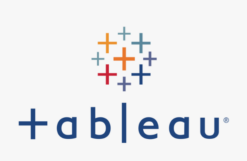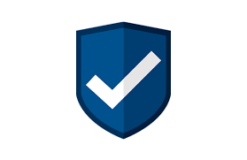Duration: 3 days – 21 hrs.
Overview
The Basic SQL Server 2022 training course is designed to provide participants with a solid foundation in using SQL Server 2022 for database management and querying. This instructor-led course covers the essential concepts and skills required to work with SQL Server databases effectively. Whether you are a beginner or have some prior knowledge of SQL Server, this course will help you enhance your understanding and proficiency.
Objectives
- Understand the architecture and components of SQL Server 2022.
- Design and create databases using SQL Server Management Studio.
- Write SQL queries to retrieve and manipulate data.
- Implement data integrity and enforce constraints.
- Create and manage database objects such as tables, views, and indexes.
- Use functions, stored procedures, and triggers to automate tasks.
- Perform basic database administration tasks.
- Understand best practices for database performance optimization.
Audience
- Database administrators, developers, and IT professionals seeking to gain proficiency in SQL Server 2022.
- Individuals who want to enhance their career prospects in database management and administration.
- Students and learners interested in acquiring fundamental SQL Server skills for personal or professional growth.
Pre- requisites
- Basic understanding of databases and SQL concepts is beneficial but not mandatory.
- Familiarity with general computer usage and Microsoft Windows operating system.
Course Content
Introduction to SQL Server
- Overview of SQL Server and its features
- Understanding relational databases and SQL
- Installing SQL Server 2022
SQL Server Management Studio (SSMS)
- Introduction to SSMS and its features
- Connecting to SQL Server instances
- Navigating the SSMS interface
Creating and Modifying Databases
- Creating a new database
- Modifying database properties
- Understanding database files and filegroups
Data Types and Tables
- Commonly used data types in SQL Server
- Creating tables and defining columns
- Working with constraints (primary key, foreign key, etc.)
Retrieving Data with SELECT
- The SELECT statement and its syntax
- Filtering data using WHERE clause
- Sorting data with ORDER BY
- Limiting results with TOP and OFFSET-FETCH
Querying Multiple Tables with Joins
- Understanding table relationships
- INNER JOIN, LEFT JOIN, RIGHT JOIN, and FULL JOIN
- Using aliases and self-joins
Data Modification with INSERT, UPDATE, DELETE
- Inserting data into tables
- Updating existing data
- Deleting data from tables
- Using transactions for data integrity
Working with Functions and Aggregates
- Built-in SQL Server functions (string, date, math, etc.)
- Working with aggregate functions (COUNT, SUM, AVG, etc.)
- Grouping data with GROUP BY
- Filtering grouped data with HAVING
Subqueries and Common Table Expressions (CTEs)
- Writing subqueries and their uses
- Using subqueries in SELECT, INSERT, UPDATE, DELETE statements
- Introduction to CTEs and their advantages
Views and Stored Procedures
- Creating and using views
- Modifying and dropping views
- Introduction to stored procedures
- Passing parameters to stored procedures
Indexes and Performance Tuning
- Understanding indexes and their types
- Creating and managing indexes
- Query optimization techniques
- Monitoring and improving performance
Introduction to Transactions and Locking
- ACID properties of transactions
- Managing transactions in SQL Server
- Understanding locking and concurrency issues
- Isolation levels and their impact
Security and User Management
- Creating logins and users
- Assigning permissions and roles
- Securing data with encryption
- Auditing and monitoring SQL Server
Backup and Restore Operations
- Importance of backups and recovery
- Performing full, differential, and transaction log backups
- Restoring databases and transaction logs
- Implementing backup strategies
Introduction to SQL Server Integration Services (SSIS)
- Overview of SSIS and its capabilities
- Creating SSIS packages
- Extracting, transforming, and loading data








